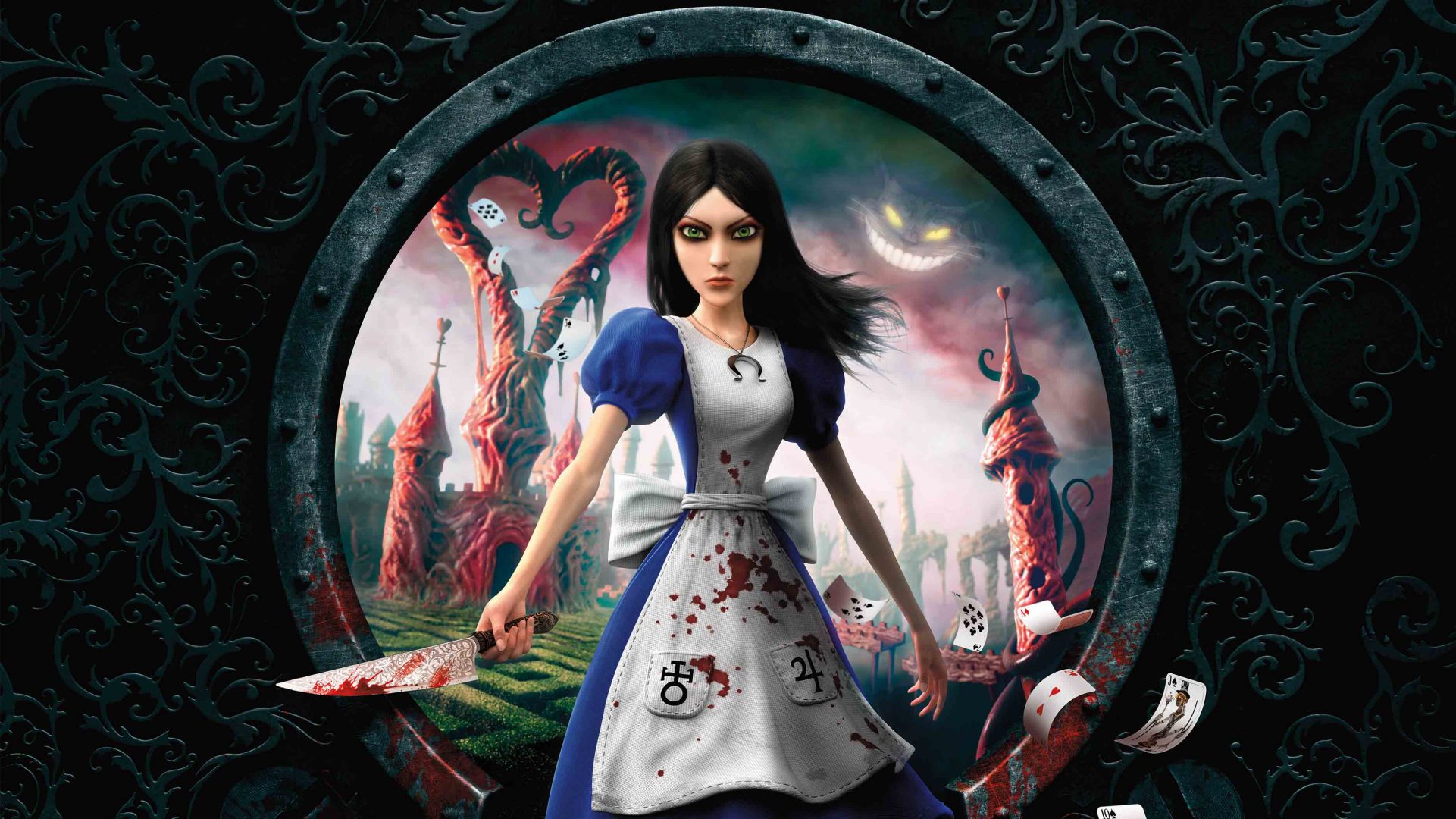You can trust VideoGamer. Our team of gaming experts spend hours testing and reviewing the latest games, to ensure you're reading the most comprehensive guide possible. Rest assured, all imagery and advice is unique and original. Check out how we test and review games here
I’ve got to be honest on this one: I’m rather distrustful of the central idea behind American McGee’s Alice games. As far as I’m concerned, Alice in Wonderland is a literary classic, and as such I struggle to see why it needs to be turned into a bloody, third-person slasher. For the record, I also think that Oliver Twist would make a lousy kart racer, and that Treasure Island wouldn’t work as a dating sim… unless you really have a fetish for beards and wooden legs.
Naturally American McGee disagrees with my scepticism, and since his first Alice game shifted some 1.5 million copies, he’s probably not the only one. Despite my reservations, I have to concede that McGee is hardly the first person to play about with Lewis Carrol’s original text. Over the past 100 years there have been numerous adaptations of differing quality, including plays, comics and numerous films. Just last year we had “that crap Burton movie” – a subject on which McGee’s feelings are clear.
“I thought that artistically, visually it was quite nice,” the veteran developer told VideoGamer.com at a recent EA showcase. “They did a good job putting it together as a piece of film, but story-wise it really fell flat on its face. Ultimately, it was an Alice in Wonderland story in which there was very little Alice. You looked at the cover of the game, and one of the things that was really striking about it was that Alice wasn’t on it! It was Johnny Depp as The Mad Hatter. You kind of looked at that and thought, ‘Okay, what story are you trying to tell here?”
If nothing else, Alice: Madness Returns certainly places its unfortunate heroine at the centre of proceedings. Like its 10-year-old predecessor, this is a third-person platformer with plenty of combat and an overtly violent tone. Up close Alice dices her enemies with the Vorpal knife or bashes them with a hobby horse, while her ranged weapons include a teapot and a pepper grinder. You’re unlikely to find either in the kitchenware department of your local Debenhams: one acts like a rocket launcher, lobbing out scalding hot blobs of tea, while the other resembles a condiment-powered gatling gun. Heaven help us if Heston Blumenthal catches wind of all this; it’ll give him ideas, and civilisation as we know it will be wiped out in some form of thermonuclear gastronomic apocalypse. Still, at least the mushroom clouds will be sautéed.
In any case, combat in Madness Returns is rarely a straightforward affair. Most of the time there’ll be a minor puzzle-solving element that challenges you to find an enemy’s weakness the first time you meet them, and in subsequent battles you may be forced to deal with several demands at once. In Queensland, for example, Alice will have to battle two different kinds of Playing Card knight, while fending off aerial attacks from amorphous black blobs, who are made from the same material that’s corrupting Wonderland. The basic cards can be fought normally, but their armoured counterparts can only be hurt from behind, requiring liberal use of Alice’s dodge – a teleport-like move that leaves a flurry of butterflies in its wake. Meanwhile the flying blobs can only be hurt by using an umbrella to return the projectiles they gob at you.
While the hack-and-slash combat seems competent in its application, it’s the surrounding environments that work best to the game’s credit. Thanks to Alice’s triple-jumping and gliding abilities there’s plenty of scope for expansive level design. In the Mad Hatter-themed level you’ll find vast stretches of nothingness separating the floating, chequered platforms that save you from death, and under the circumstances it’s easy to feel small, and a little bit helpless. Of course, at times you really will be small – as at the touch of a button you can shrink Alice to a fraction of her size. In this reduced state our girl is able to squeeze through hidden cubby holes, while mysterious messages appear on nearby walls, revealing clues in a glowing scrawl.
The references to Carroll’s original books fly thick and fast, even if their representation has been distorted to fit McGee’s hellish tone. In the Hatter level you’ll see unfortunate dodos being roasted over cruel flames, while one sequence in Queensland requires you to battle your way through a Hedge Maze. There’s also a neat scene where a slice of cake allows Alice to change size at a particularly opportune moment, but I’ll spare the details on this to avoid spoiling the surprise.
While I can’t say that my initial reticence has been dispelled, there’s no questioning that Alice: Madness Returns is backed up by a firm commitment to its nightmarish vision. There are echoes here of Dante’s Inferno – another EA-published riff on unusual source material – although Spicy Horse’s game lacks a 60fps frame rate, or indeed the glossy production that pepped up Visceral’s efforts. All the same, there’s something quietly unnerving about Alice’s progress through the ruins of her fractured psyche, and the severed heads she leaves in her wake. It’s taken 10 years for American McGee to crawl back down the rabbit hole, but soon we’ll know if Wonderland warren-ts a second visit.
Alice: Madness Returns is scheduled for release on June 17 for Xbox 360, PS3 and PC.
Alice: Madness Returns
- Platform(s): iOS, PC, PlayStation 3, Xbox 360, Xbox One
- Genre(s): Action, Adventure

/https://oimg.videogamer.com/images/627f/the_return_of_alice_9.jpg)






